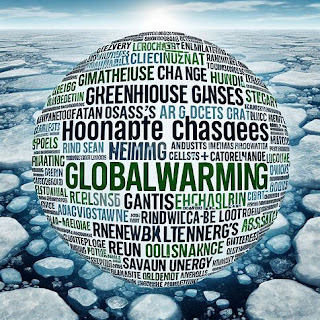Introduction:
Global warming is a term used to describe the long-term rise in Earth's average temperature due to human activities that increase the concentration of greenhouse gases in the atmosphere. These gases, such as carbon dioxide (CO₂), methane (CH₄), and nitrous oxide (N₂O), trap heat, leading to a warming effect known as the greenhouse effect. This phenomenon has significant implications for the environment, ecosystems, and human societies. This article explores the causes, impacts, and potential solutions to global warming.
##Causes of Global Warming:
Greenhouse Gas Emissions:
The primary driver of global warming is the increased concentration of greenhouse gases in the atmosphere. These gases are released through human activities such as the burning of fossil fuels, deforestation, and industrial processes. Fossil fuels, including coal, oil, and natural gas, are used extensively for energy production, transportation, and manufacturing. When burned, they release significant amounts of CO₂ into the atmosphere, contributing to the greenhouse effect.
Deforestation:
Forests play a crucial role in absorbing carbon dioxide through photosynthesis. However, widespread deforestation, particularly in tropical regions like the Amazon rainforest, reduces the planet's capacity to absorb CO₂. The loss of forests also contributes to the release of stored carbon back into the atmosphere, exacerbating the problem.
Agriculture and Livestock:
Agriculture, especially industrial-scale farming, is a significant source of greenhouse gas emissions. Livestock, such as cattle and sheep, produce methane through digestion, while agricultural practices like rice cultivation and the use of nitrogen-based fertilizers release methane and nitrous oxide, respectively. These gases are far more potent than carbon dioxide in terms of their warming potential.
## Impacts of Global Warming:
Rising Temperatures:
The most direct impact of global warming is the steady increase in global temperatures. Since the late 19th century, the Earth's average temperature has risen by about 1.2 degrees Celsius (2.2 degrees Fahrenheit). This seemingly small increase has far-reaching consequences, affecting weather patterns, ecosystems, and human health.
Melting Ice and Rising Sea Levels:
As global temperatures rise, polar ice caps and glaciers are melting at an alarming rate. This contributes to rising sea levels, which pose a significant threat to coastal communities and low-lying areas. If current trends continue, many cities and island nations could face severe flooding and even displacement.
Extreme Weather Events:
Global warming is associated with an increase in extreme weather events, such as hurricanes, heatwaves, droughts, and heavy rainfall. These events can cause widespread damage to infrastructure, disrupt food production, and lead to loss of life.
Impact on Biodiversity:
Ecosystems are highly sensitive to changes in temperature and climate. Global warming leads to habitat loss, changes in migration patterns, and a decline in biodiversity. Species that cannot adapt quickly enough to the changing conditions face the risk of extinction, leading to a cascading effect on ecosystems and the services they provide to humanity.
Human Health Risks:
Global warming has direct and indirect impacts on human health. Rising temperatures can exacerbate air quality issues, leading to respiratory problems and cardiovascular diseases. The increased frequency of heatwaves can cause heat-related illnesses, and the spread of vector-borne diseases, such as malaria and dengue fever, can increase as warmer temperatures create more favorable conditions for disease-carrying insects.
## Mitigation and Adaptation:
Renewable Energy Sources:
A critical solution to global warming is the transition to renewable energy sources such as solar, wind, and hydroelectric power. These sources produce little to no greenhouse gas emissions and can significantly reduce our reliance on fossil fuels.
Energy Efficiency:
Improving energy efficiency is another effective way to combat global warming. This involves using technology and practices that require less energy to perform the same tasks. Energy-efficient buildings, transportation, and industrial processes can significantly reduce carbon footprints.
Carbon Capture and Storage:
Technologies that capture and store carbon dioxide before it is released into the atmosphere are gaining traction. Carbon capture and storage (CCS) involves capturing CO₂ emissions from industrial processes and storing them underground in geological formations, preventing them from contributing to global warming.
Reforestation and Conservation:
Reforestation and conservation efforts can help restore forests and increase the Earth's capacity to absorb carbon dioxide. Planting trees and protecting existing forests are effective ways to sequester carbon and combat deforestation.
International Agreements:
Global warming is a global problem that requires international cooperation to address. Agreements like the Paris Agreement, signed in 2015, aim to unite countries in the fight against global warming by setting emission reduction targets and encouraging sustainable practices. These agreements are crucial for coordinating global efforts and ensuring that all countries contribute to the solution.
Conclusion:
Global warming is one of the most significant challenges facing humanity. Its causes are deeply rooted in human activities, but its impacts are far-reaching and affect every aspect of life on Earth. Addressing global warming requires a combination of mitigation and adaptation strategies, technological innovation, and global cooperation. By transitioning to renewable energy, improving energy efficiency, and promoting reforestation, we can mitigate the impacts of global warming and work towards a more sustainable future for all.
.jpeg)
.jpeg)



No comments:
Post a Comment